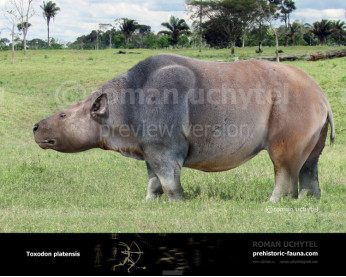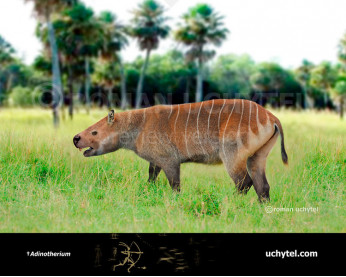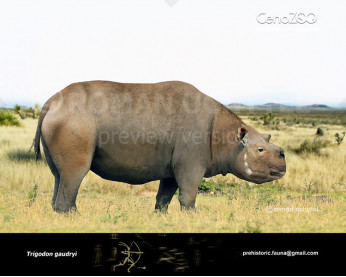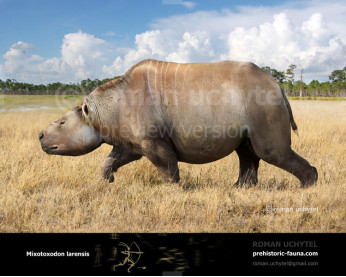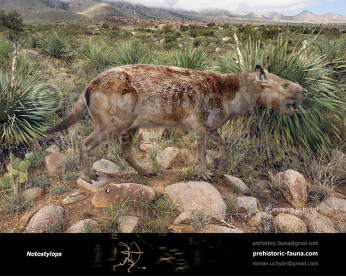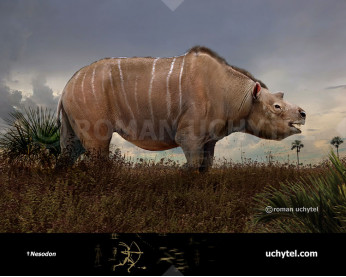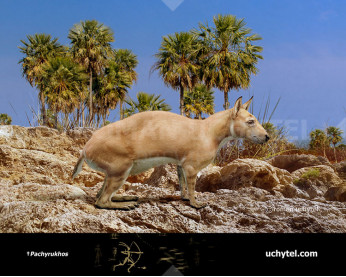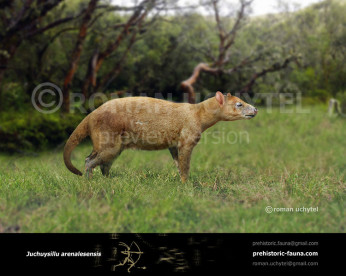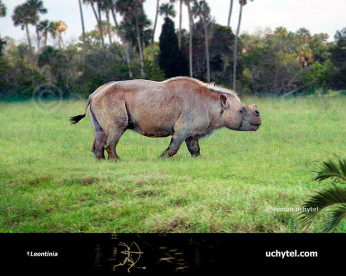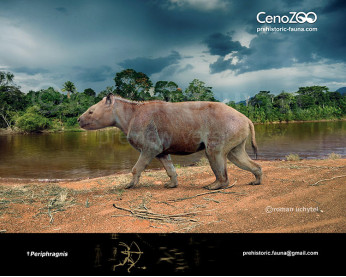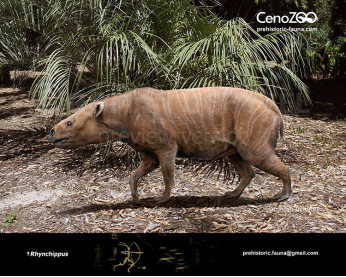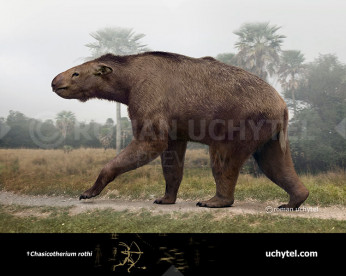Thomashuxleya
344344Thomashuxleya (†Thomashuxleya.rostrata Ameghino, 1901 (type species))
Order: Notoungulata
Suborder: †Toxodonta
Family: †Isotemnidae
Time period: Early Eocene of Argentina and Patagonia (South America)
Size: 1,3 m in length, 60 cm in height, 80-115 kg of weight.
Thomashuxleya is an extinct genus of notoungulate mammal, named after famous 19th-century biologist Thomas Huxley. Thomashuxleya was about 1.3 metres in length and weighted an estimated 113 kilograms, with a heavy body and strong limbs. Its large skull had 44 teeth in its jaws, including large tusks which may have been used to dig around in earth. It had four toes on each foot, and probably walked somewhat like a modern peccary. It was a relatively generalised animal, not specialised for any particular way of life. There's an almost complete skeleton of this animal in exhibition in the American Museum of Natural History. This skeleton was discovered during the Scarrit expedition to Patagonia, Argentina, that was led by the paleontologist George Gaylord Simpson. Fossils of Thomashuxleya have been found in the Sarmiento and Casamayor Formations of Argentina.
From Wikipedia, the free encyclopedia
Thomashuxleya (†Thomashuxleya.rostrata Ameghino, 1901 (type species))
Order: Notoungulata
Suborder: †Toxodonta
Family: †Isotemnidae
Time period: Early Eocene of Argentina and Patagonia (South America)
Size: 1,3 m in length, 60 cm in height, 80-115 kg of weight.
Thomashuxleya is an extinct genus of notoungulate mammal, named after famous 19th-century biologist Thomas Huxley. Thomashuxleya was about 1.3 metres in length and weighted an estimated 113 kilograms, with a heavy body and strong limbs. Its large skull had 44 teeth in its jaws, including large tusks which may have been used to dig around in earth. It had four toes on each foot, and probably walked somewhat like a modern peccary. It was a relatively generalised animal, not specialised for any particular way of life. There's an almost complete skeleton of this animal in exhibition in the American Museum of Natural History. This skeleton was discovered during the Scarrit expedition to Patagonia, Argentina, that was led by the paleontologist George Gaylord Simpson. Fossils of Thomashuxleya have been found in the Sarmiento and Casamayor Formations of Argentina.
From Wikipedia, the free encyclopedia

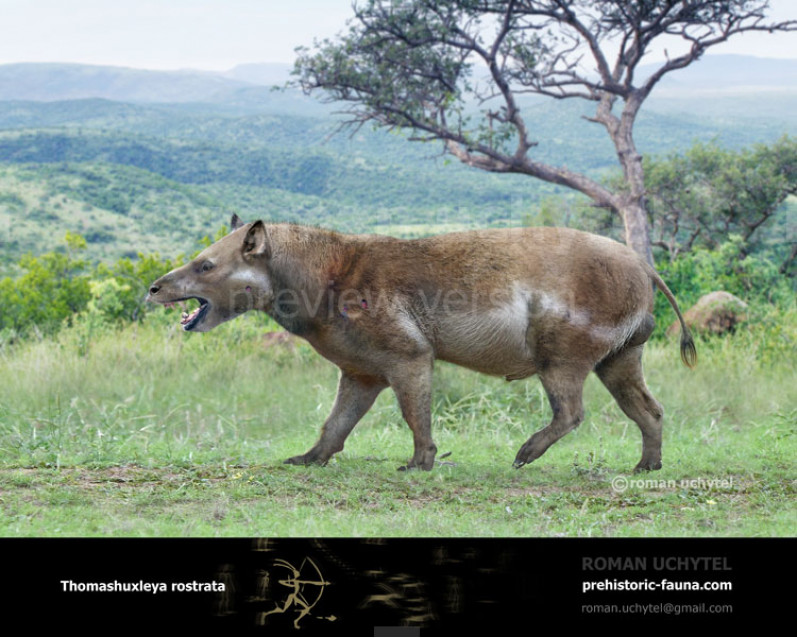
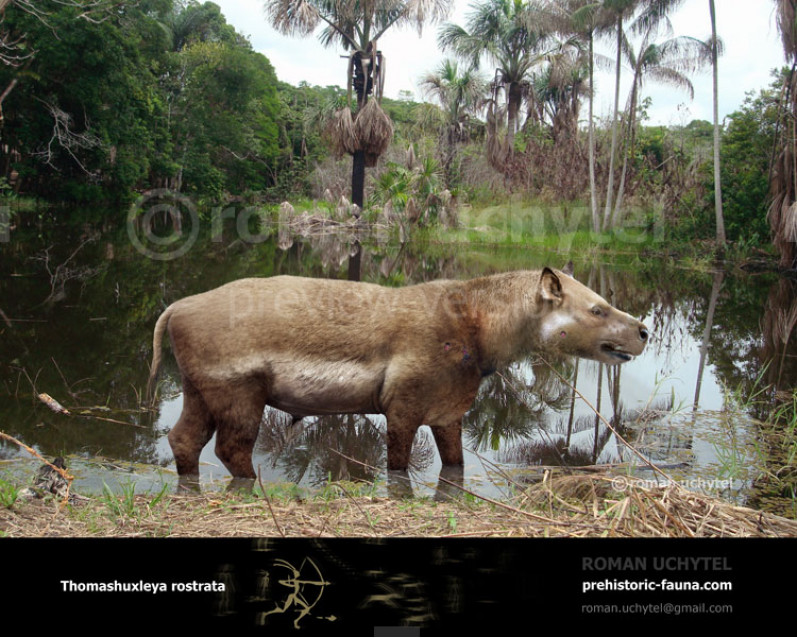
-797x638.jpg)
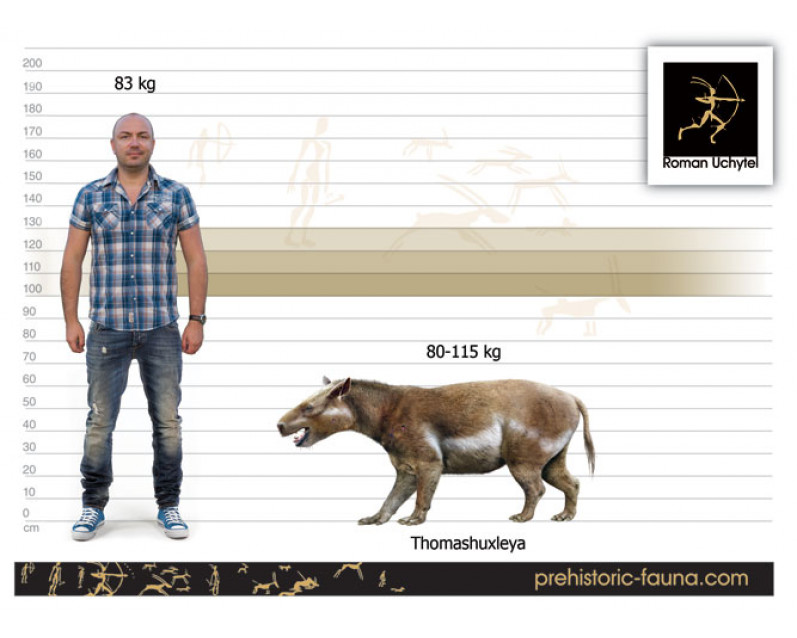


-70x56.jpg)

